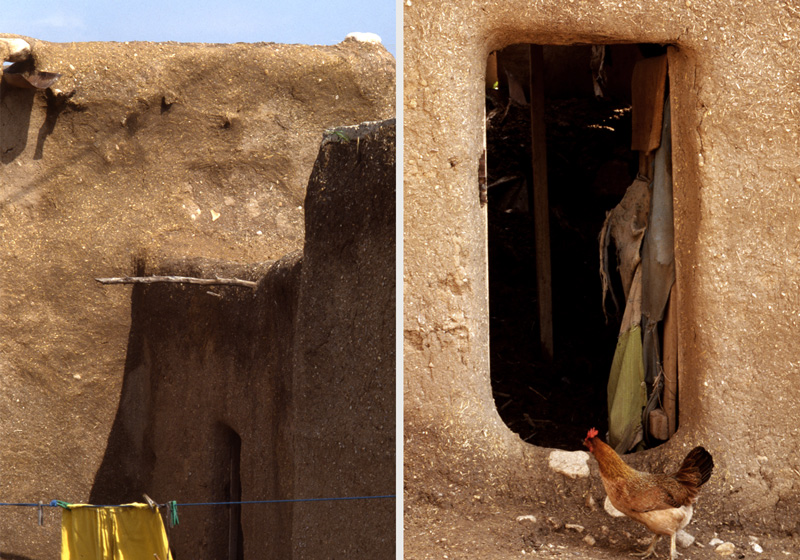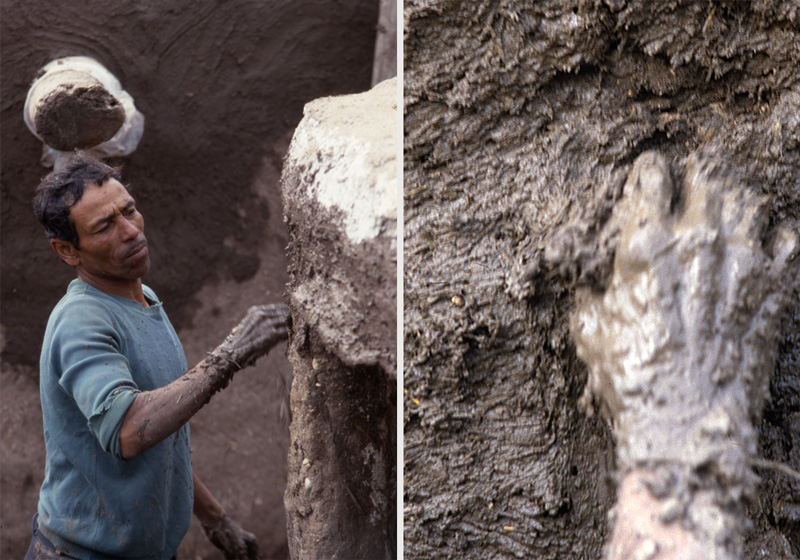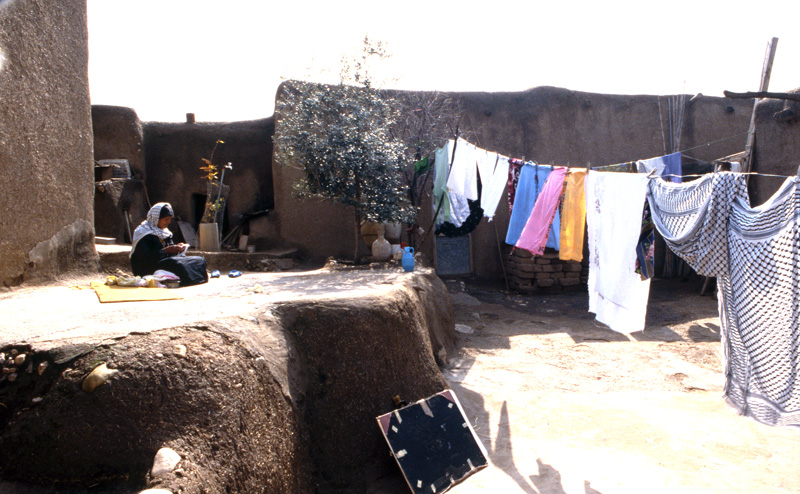Life in Mud
Mud is sensational. It is the bedrock of all building materials. It is the choice of God for creating us, and the choice of early humans to create their architecture and many of the artifacts within.
Mud is nature at ease, least altered, and least pretentious. Raw earth, this material that is the least expensive of all, holds within its very essence the powers of sublime spirituality. Mud is velvet, when dry and when wet. It is the extension of the very skin of the landscape.
We might be lucky to catch a glimpse of some last examples of the use of this material in the making of dwellings. Since the invention of the “house” some 10,000 years ago, mud has played a central role as a human-friendly and nature-friendly building material. Within less than a decade we might see the end of the use of this material that sheltered mankind for the last 300 generations.
In Jordan, mud architecture (using sun-dried mud-brick as load-bearing walls) has been the norm mostly in the Jordan Valley and to a lesser extent in the eastern desert. Since the earliest examples within archaeological sites in the Rift Valley and all the way until the 1970s, mud-brick was the most suitable building material, in a place where clay is abundant and stones are too round to stack safely as walls.
In the traditional architecture of the Jordan Valley, houses were usually built entirely of mud-brick, with a stone foundation that extended to the height of one or two feet of the wall-base, giving the wall the needed resistance against erosion caused by rising humidity. Sun-dried mud-brick was a magical material. It made it possible for people to self-provide their housing needs without any cost, is was a building material that gave builders a hundred percent added value to their efforts in shaping the final product.
Mud is also flexible, it prefects curves, cancels joints, and sensitively bends to meet and dovetail other materials. Mud also erases the line separating architecture from land. In a cluster of houses at the village of Waqqas in the northern Jordan valley, until couple of years ago, there was a coherent three-dimensional composition. The cubes of rooms, the void of courtyards, the gateways, and the earth-cliff at the edge of land below, are all read as one- in their color, their texture, and their tranquil fragility.

Mud architecture also provides the best insulation, better than any of the contemporary concrete replacements. It is cooler in summer in the Jordan Valley environment where summer days are uncomfortably hot, and warmer in winter when occasional frosts might occur. Unlike what most people think, mud is water-resistant in its own way. Although mud-bricks can be cut by rainwater running down the walls, mud actually secures a dry interior more than concrete does. The secret of this water insulation property is that mud expands when it is wet, and, unlike concrete, it blocks water from penetrating deep into the structure.

Besides all of its technical properties, mud played a central role in joining the family efforts to build their common home. While concrete helped to deprive the rural family from being housing self-sufficient, mud used to group the family, men and women, around the task of house-building and house-maintaining, and while today’s “advanced” cement is actually harmful to our skin, mud was hand-friendly, allowing all family members to join in the making of their home.

The cluster of houses at Waqqas was as natural as a nest of swallows, built of mud on a mud-land, easily reversible, returning to nature if abandoned –it did not cause any damage in different locations as modern quarried building materials do, and did not pollute the atmosphere by being processed and transported from afar.
The traditional mud architecture of the Jordan Valley is completely biodegradable, eternally recyclable, and adds no cost to our future and hidden environmental bill; it may be whispering some important ideas to us.
The Jordan Valley is an ideal destination these days, the northern parts have fewer or no flies, and the areas behind the front line of houses at the main road have kept some good examples of mud architecture. It might be difficult to find complete compounds built out of mud, and whatever examples still surviving are on their way to extinction and thus are important to document. There are some mud structures with two floors, such as the famous Kawar house at the Aarda area in central Jordan Valley, it might still be standing but in a very dilapidated condition. After the first rain, you might be able to collect some of the early edible wild vegetables, such as khobbaizeh, houairneh, and many others.